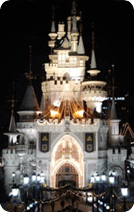
The Korean Peninsula is located in North-East Asia. It is bordered by the Amnok River (Yalu River) to the northwest, separating Korea from China, and the Duman River (Tumen River) to the northeast which separates Korea from both China and Russia. The country itself is flanked by the Yellow Sea to its west and the East Sea to the east. There are several notable islands that surround the peninsula including Jeju-do, Ulleung-do and Dok-do (Liancourt Rocks). The Korean peninsula is roughly 1,030 km (612 miles) long and 175 km (105 miles) wide at its narrowest point. Korea's total land area is 100,140 sq km, and it has a population of 48.7 million people (2009). Because of its unique geographical location, Korea is a very valuable piece of land and an international hub of Asia.
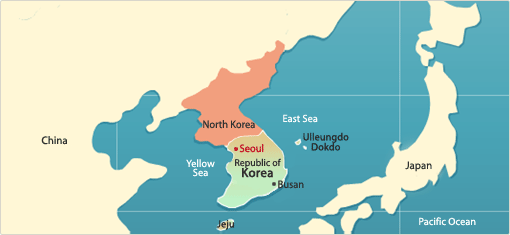
Korea has four seasons, with a wet monsoon/summer season in the middle of the year, and a cold winter from November to March. The island of Jeju off the southern coast is the warmest and wettest place in the country. The ideal time to visit Korea is during the autumn months (September-November). During this time, the country experiences warm, sunny weather, skies that are cobalt blue and spectacular foliage that is perhaps the biggest draw. Winters are cold and dry and are a good time to visit if you are interested in winter sports as there are numerous ski resorts. Spring (April-May) is also beautiful with all the cherry blossoms in bloom. However, it is very busy and one needs to book in advance to ensure accommodation is available. The summer months are muggy and hot, and rather crowded. It is also when the monsoon season begins so many activities are subject to the fluctuations of heavy rain.




A diverse array of food and dishes can be found throughout Korea. Korea was once primarily an agricultural nation, cultivating rice as their staple food since ancient times. These days Korean cuisine is characterized by a wide variety of meat and fish dishes along with wild greens and vegetables. Various fermented and preserved food, such as kimchi (fermented spicy cabbage), jeotgal (matured seafood with salt) and doenjang (fermented soy bean paste) are notable for their specific flavor and high nutritional value. The prominent feature of a Korean table setting is that all dishes are served at the same time. Traditionally, the number of side dishes varied from 3 for the lower classes to 12 for royal family members. Table arrangements can vary depending on whether a noodle dish or meat is served. Formal rules have developed for table setting, demonstrating the attention people pay to food and dining. Compared to neighboring China and Japan, a spoon is used more often in Korea, especially when soups are served.




Seoul has been the capital of Korea for about 600 years, since the time of the Joseon Dynasty(1392-1910). Seoul was referred to as “Han Yang” during the Joseon Dynasty, but after the liberation from Japan, in 1945, the newly founded Republic of Korea officially changed its capital city’s name to Seoul. Seoul has developed into a bustling metropolis, acting as the hub for political, economic, social, and cultural matters. The Han River runs through the heart of the city. The river divides the city in two; the northern part of the city is a focal point for culture and history, while the southern part is well known for its business district. Seoul has hosted many international events including: 1986 Asian Games, 1988 Olympic Games and 2002 Korea/Japan FIFA World Cup. The success of these events has shown people that Korea is truly an international city. In Seoul you can find ancient palaces and Royal Shrines of the Joseon Dynasty, as well as Seoul World Cup Stadium, 63 CITY building, Lotte World, Han River, Namsan, Bukhansan Mountain National Park, Daehangno, Insa-dong, Itaewon, Myeong-dong, Apgujeong, Namdaemun and Dongdaemun Markets. On the outskirts of Seoul you can find Seoul Land, Everland, Caribbean Bay, The Korean Folk Village, Suwon Hwaseong Fortress, and Namhansan Mountain Fortress.
- Land size: 605.27㎢
- Population: 10,456,000 people (Statistics from 2008)



Korea is situated on the Korean Peninsula, which spans 1,100 kilometers north to south. The Korean Peninsula lies on the north-eastern section of the Asian continent, where the oceans to east of Korean are joined by the western-most parts of the Pacific. The peninsula shares its northern border with China and Russia. To the east is the East Sea, beyond which neighboring Japan lies. To the west is the Yellow Sea. In addition to its mainland, Korea includes some 3,200 islands. Mountains cover 70% of Korea's land mass, making it one of the most mountainous regions in the world. South Korea's 99,500sq.km is populated by 47.9 million people.
Administratively, the Republic of Korea consists of nine provinces.
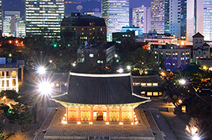
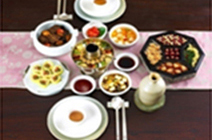
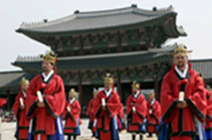
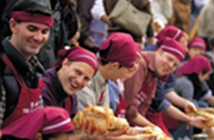
Located to the west of the central region of the Korean Peninsula, Seoul, the capital city of the Republic of Korea, has been the center of the country in its long history from the prehistoric era to the present day. Now in its 600th year of official history, Seoul is a city where Korea's traditional and modern cultures coexist.
The city lies in a natural basin, surrounded by a series of mountains and hills, and its grandeur and magnificent scenic beauty makes it one of the most attractive metropolitan cities of the world. Aside from bustling pace of life and modern architecture, a number of invaluable cultural assets in Seoul take pride in its long history. The Jongmyo Shrine and Changdeok Palace have been added to UNESCO's list of cultural heritage.
N Seoul Tower
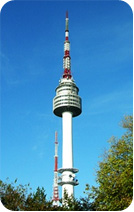
Gyeongbokgung
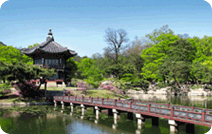
Cheonggyecheon
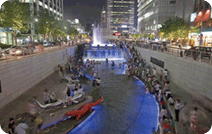
Myeong-dong
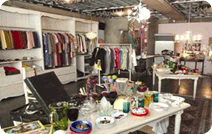
Insa-dong
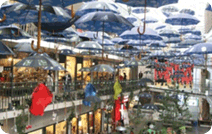
Namsangol Hanok Village
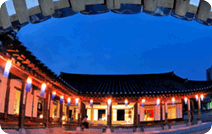
Jongmyo Royal Shrine
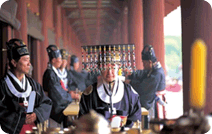
Lotte World
